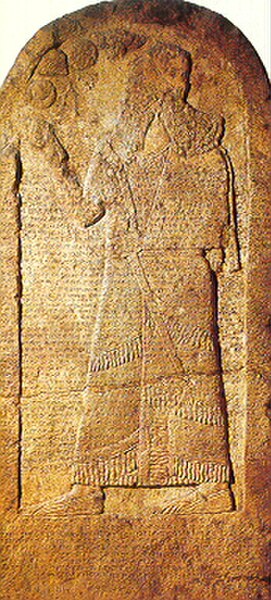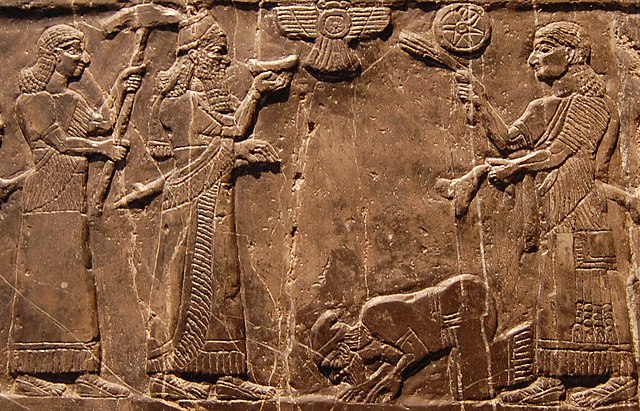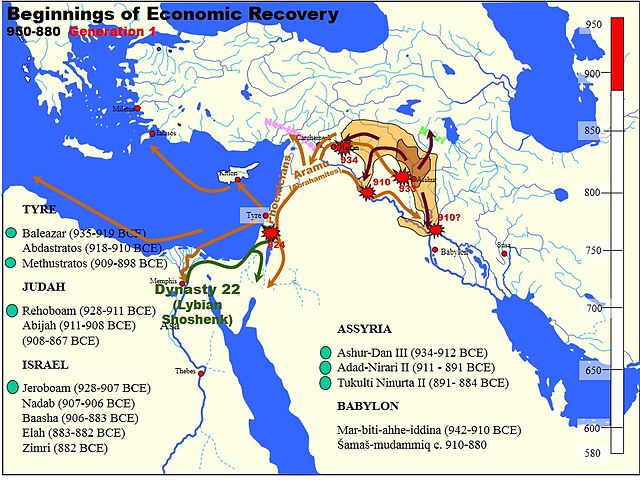Shalmaneser III was king of the Neo-Assyrian Empire from the death of his father Ashurnasirpal II in 859 BC to his own death in 824 BC.
Shalmaneser III, on the Throne Dais of Shalmaneser III at the Iraq Museum.
Kurkh stela of Shalmaneser that commemorates the battle of Carcar.
Marduk-zakir-shumi I (left) greeted by Shalmaneser III (right). Detail, front panel, Throne Dais of Shalmaneser III, Iraq Museum.
Jehu bows before Shalmaneser III. This is "the only portrayal we have in ancient Near Eastern art of an Israelite or Judaean monarch".
The Neo-Assyrian Empire was the fourth and penultimate stage of ancient Assyrian history. Beginning with the accession of Adad-nirari II in 911 BC, the Neo-Assyrian Empire grew to dominate the ancient Near East throughout much of the 8th and 7th centuries BC, becoming the largest empire in history up to that point. Because of its geopolitical dominance and ideology based in world domination, the Neo-Assyrian Empire is by many researchers regarded to have been the first world empire in history. It influenced other empires of the ancient world culturally, administratively, and militarily, including the Babylonians, the Achaemenids, and the Seleucids. At its height, the empire was the strongest military power in the world and ruled over all of Mesopotamia, the Levant and Egypt, as well as parts of Anatolia, Arabia and modern-day Iran and Armenia.
Assyrian borders and campaigns under Ashur-dan II (r. 934–912 BC), Adad-nirari II (r. 911–891 BC) and Tukulti-Ninurta II (r. 890–884 BC)
Annals of Tukulti-Ninurta II (r. 890–884 BC), recounting one of his campaigns
Stele of Ashurnasirpal II (r. 883–859 BC)
Assyrian borders and campaigns under Ashurnasirpal II (r. 883–859 BC)








